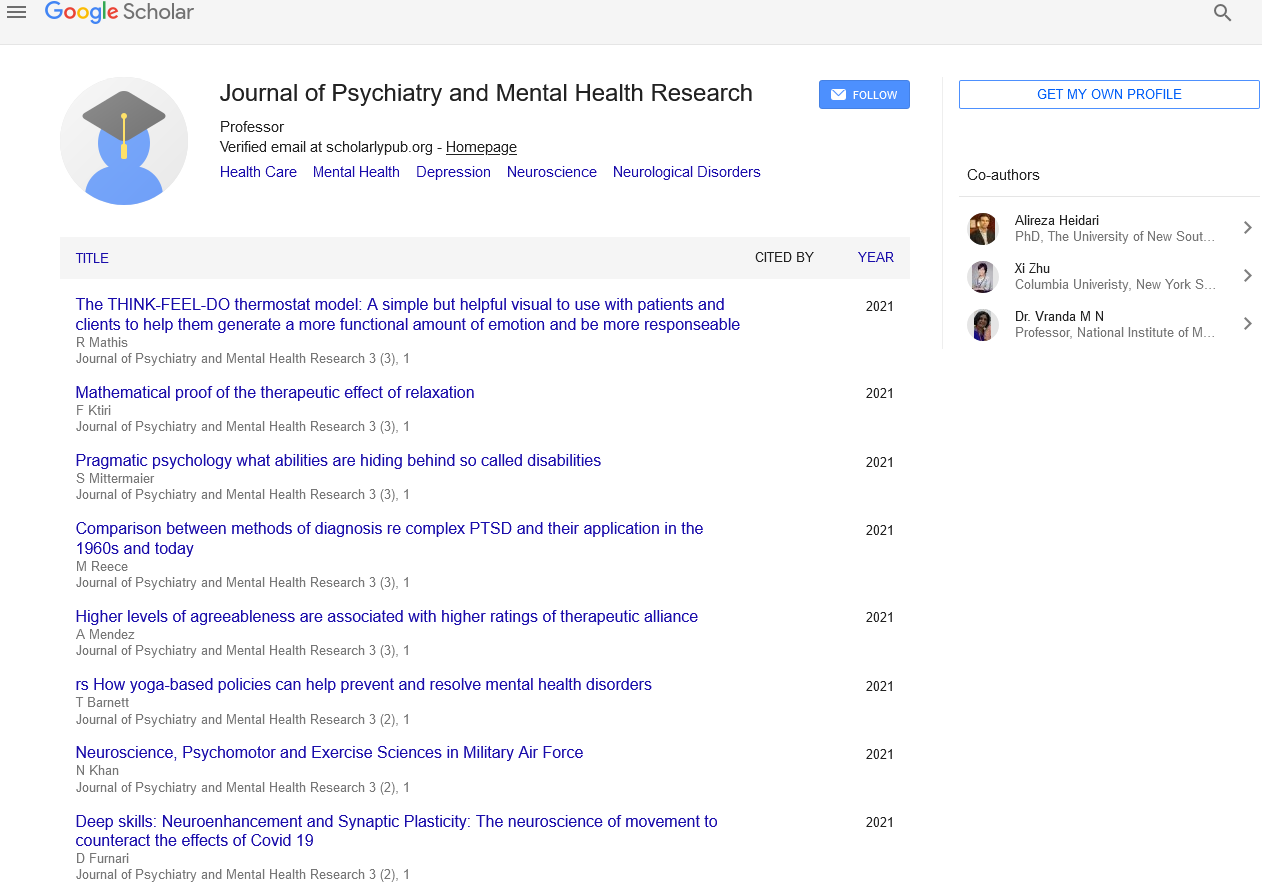in the past when many physical phenomena were not well understood or when histories were not recorded myths often arose
Received: 03-Oct-2021 Editor assigned: 05-Jul-2024 Accepted Date: Jul 14, 2024; Reviewed: 08-Jul-2024 Revised: 12-Jul-2024 Published: 23-Jul-2024
This open-access article is distributed under the terms of the Creative Commons Attribution Non-Commercial License (CC BY-NC) (http://creativecommons.org/licenses/by-nc/4.0/), which permits reuse, distribution and reproduction of the article, provided that the original work is properly cited and the reuse is restricted to noncommercial purposes. For commercial reuse, contact reprints@pulsus.com
Editorial Note
Mental health is "a state of well-being in which the individual realizes his or her own abilities, can cope with the normal stresses of life, can work productively and fruitfully, and is able to make a contribution to his or her community", according to the World Health Organization (WHO). Mental health includes subjective well-being, perceived self-efficacy, autonomy, competence, intergenerational dependence, and self-actualization of one's intellectual and emotional potential, among others. From the perspectives of positive psychology or holism, mental health may include an individual's ability to enjoy life and to create a balance between life activities and efforts to achieve psychological resilience. Cultural differences, subjective assessments, and competing professional theories all affect how one defines "mental health". Mental health, as defined by the Public Health Agency of Canada, is an individual’s capacity to feel, think, and act in ways to achieve a better quality of life while respecting the personal, social, and cultural boundaries. Impairment of any of these is a risk factor for mental disorders, which are components of mental health. Mental disorders are defined as the health conditions that affect and alters cognitive functioning, emotional responses, and behavior associated with distress and/or impaired functioning. The ICD-11 is the global standard used to diagnose, treat, research, and report various mental disorders. In the United States, the DSM-5 is used as the classification system of mental disorders. Mental health is associated with a number of lifestyle factors such as diet, exercise, stress, drug abuse, social connections and interactions. Therapists, psychiatrists, psychologists, social workers, nurse practitioners, or family physicians can help manage mental illness with treatments such as therapy, counseling or medication.
Early history
In the mid-19th century, William Sweetser was the first to coin the term mental hygiene, which can be seen as the precursor to contemporary approaches to work on promoting positive mental health. Isaac Ray, the fourth president of the American Psychiatric Association and one of its founders, further defined mental hygiene as "the art of preserving the mind against all incidents and influences calculated to deteriorate its qualities, impair its energies, or derange its movements". In American history, mentally ill patients were thought to be religiously punished. This response persisted through the 1700s, along with inhumane confinement and stigmatization of such individuals. Dorothea Dix (1802–1887) was an important figure in the development of the "mental hygiene" movement. Dix was a school teacher who endeavored to help people with mental disorders and to expose the sub-standard conditions into which they were put. This became known as the "mental hygiene movement". Before this movement, it was not uncommon that people affected by mental illness would be considerably neglected, often left alone in deplorable conditions without sufficient clothing. From 1840 to 1880, she won over the support of the federal government to set up over 30 state psychiatric hospitals; however, they were understaffed, under-resourced, and were accused of violating human rights.
Emil Kraepelin in 1896 developed the taxonomy of mental disorders which has dominated the field for nearly 80 years. Later, the proposed disease model of abnormality was subjected to analysis and considered normality to be relative to the physical, geographical and cultural aspects of the defining group. At the beginning of the 20th century, Clifford Beers founded "Mental Health America – National Committee for Mental Hygiene", after publication of his accounts as a patient in several lunatic asylums, A Mind That Found Itself, in 1908 and opened the first outpatient mental health clinic in the United States.





